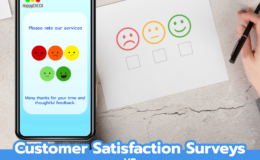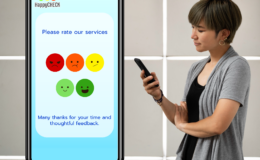Customer satisfaction surveys are a crucial tool for organizations to learn more about how customers feel about their goods and services. It can be difficult, though, to get clients to really complete the questionnaires. This article will discuss methods for increasing survey response rates and obtaining more customer feedback.
1. Keep it Short and Simple
The fact that surveys are overly complicated or lengthy is one of the main reasons why customers don’t finish them. Keep your survey short and straightforward to increase response rates. Make sure each question is simple and easy to grasp, and limit the number of questions to no more than 10-15. You’ll improve the survey’s chances of being completed by clients by making it succinct and to the point.
2. Use a Personalized Approach Strategy
A strong incentive for customers to respond to your survey is personalization. For a more individualized experience, customize your survey by including client names or account information. Inquiries concerning a recent purchase or customer service experience, for instance, can be tailored based on the consumer’s previous experiences with the firm. Customers will feel that their feedback is valuable and pertinent to their unique experience with the firm if it is treated with personal attention.
3. Offer Incentives
Offering incentives is yet another powerful strategy to boost survey response rates. For completing the survey, think of providing a little discount or the opportunity to win a gift. The incentives should not be very large, though, as this may result in skewed results. Maintain modest rewards that are pertinent to the client experience.
4. Use Multiple Channels
Use a variety of venues to distribute your survey so that it reaches as many clients as possible. Think about distributing the survey using email, social media, or even direct mail. You’ll enhance the chance that customers will notice the survey and respond by utilizing a variety of venues.
5. Time Your Survey Strategically
In order to increase your survey response rate, timing is crucial. Think about the best time of day for your customers to respond to the survey. If your company is open on the weekends, for instance, you can think about distributing the survey on a Sunday when clients might be more available. To make the survey more pertinent and timely, you can also time it to coincide with a recent transaction or customer support encounter.
6. Follow Up with Customers
Getting in touch with clients who have not responded to the survey can help you raise the response rate. To nudge customers to finish the survey, think about sending a follow-up email or calling them on the phone. In your follow-up, be courteous and respectful and stress the value of their comments to the company.
7. Use a Clear Call to Action
Make sure your poll has a prominent call to action that inspires respondents to respond. Use wording that highlights the significance of their comments and how they will be included to enhance the client experience. A progress bar or other visual component that indicates to customers how much of the survey they have finished might be appropriate.
8. Test Your Survey
Test your survey to make sure it is clear, simple to read, and error-free before distributing it to clients. Give the survey to a few coworkers or acquaintances, and ask them to comment on the questions and the overall experience. Prior to sending the customer survey, this will assist you in identifying any problems or potential areas for improvement.
9. Be Transparent
Finally, be open and honest with your customers about the purpose of the survey and how you plan to use their comments. If customers are aware of the importance of the survey and how their responses will help to enhance the customer experience, they are more inclined to participate. Consider inserting a statement at the start of the survey outlining the purpose of the poll and the intended use of the responses.
In conclusion, a systematic strategy that considers the interests and behaviors of your clients is necessary to maximize your survey response rate. by retaining







